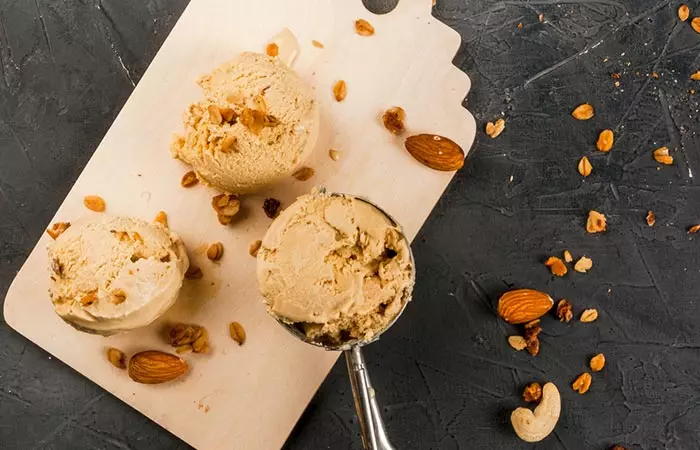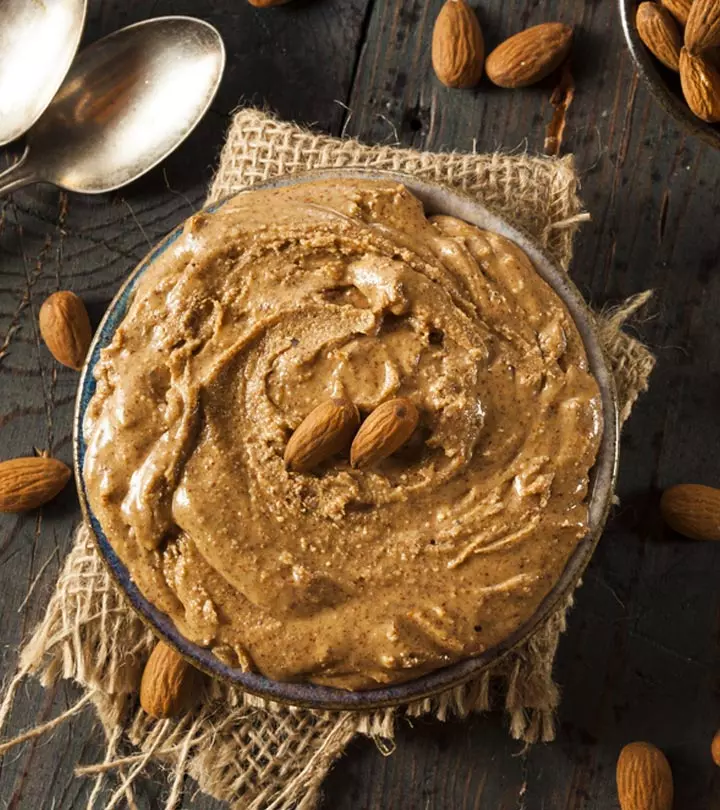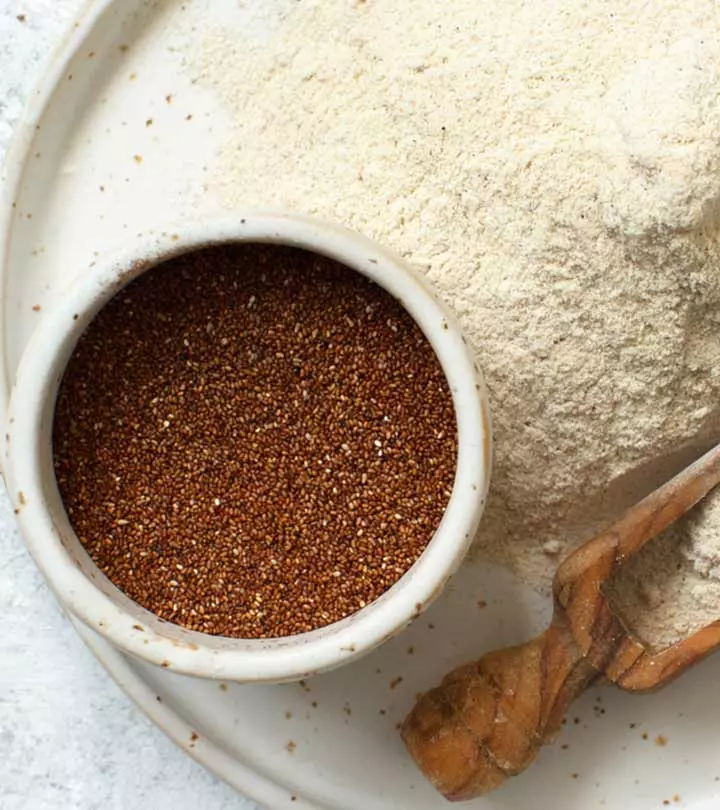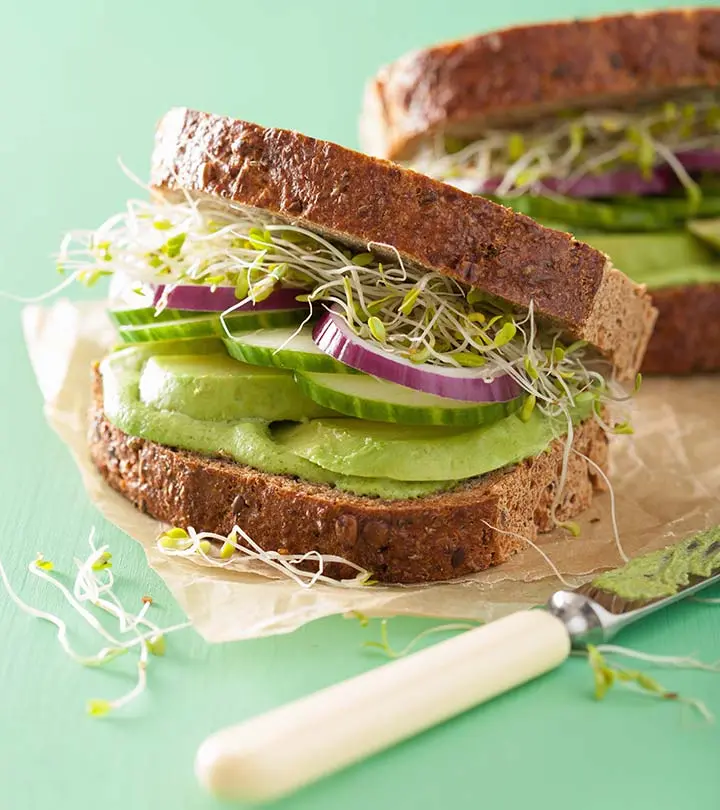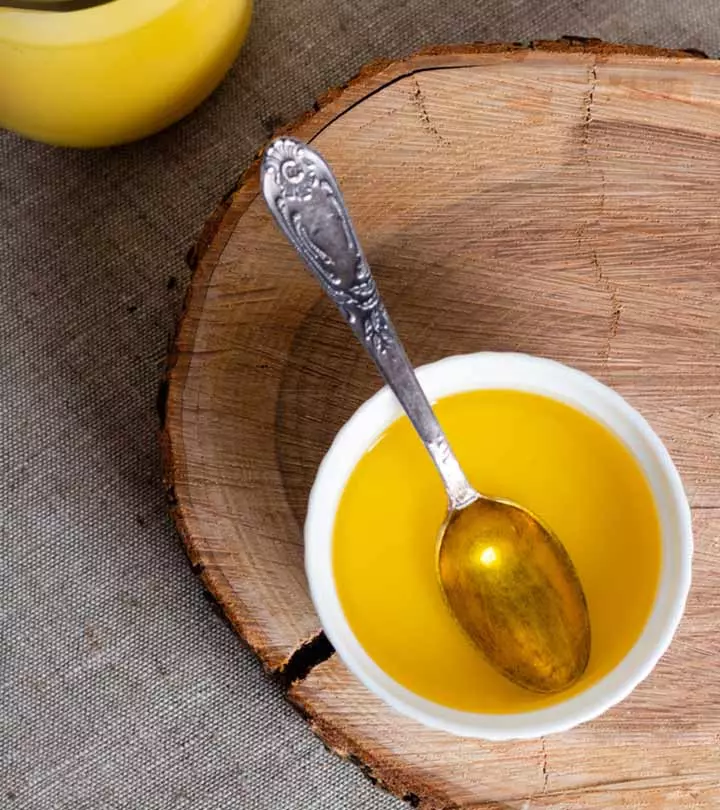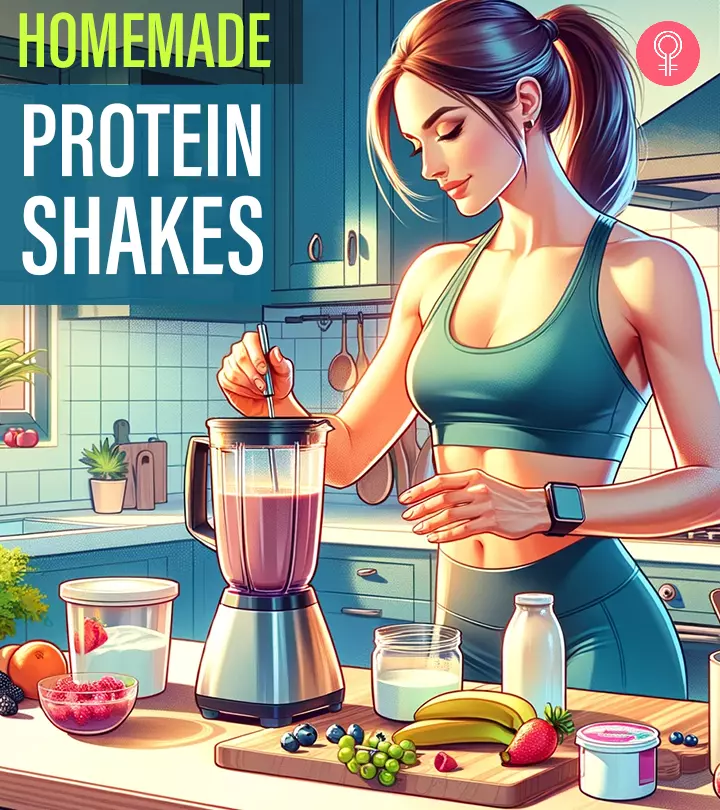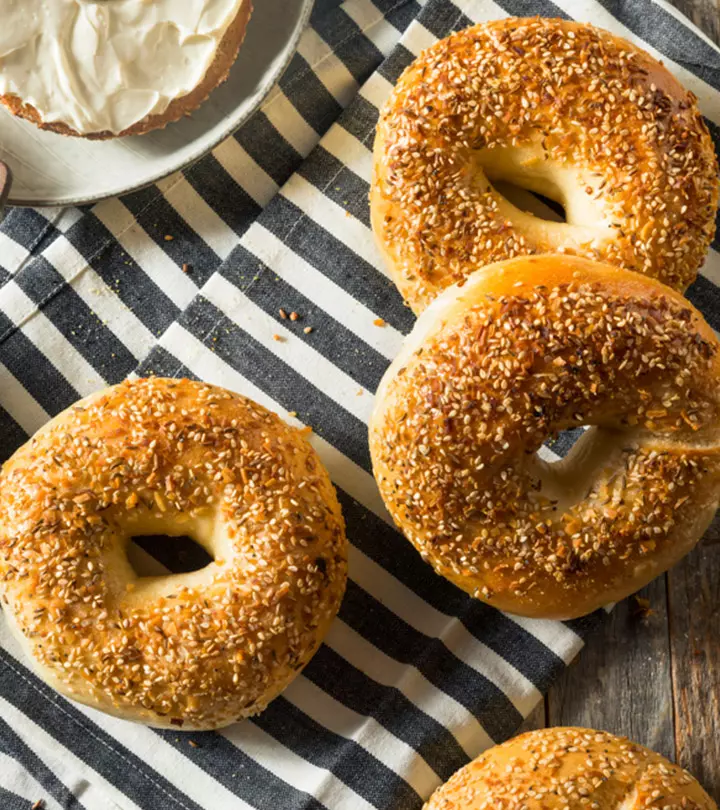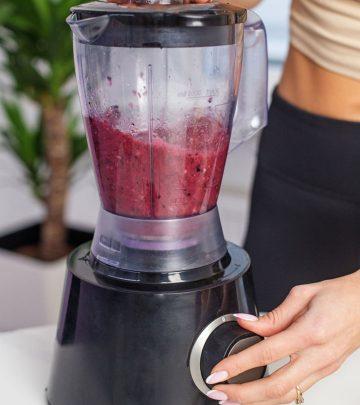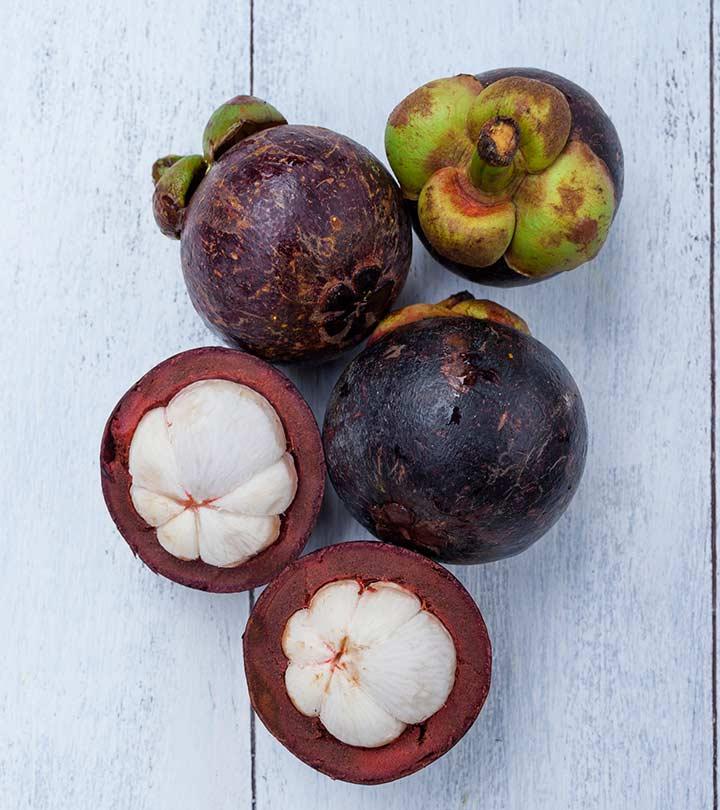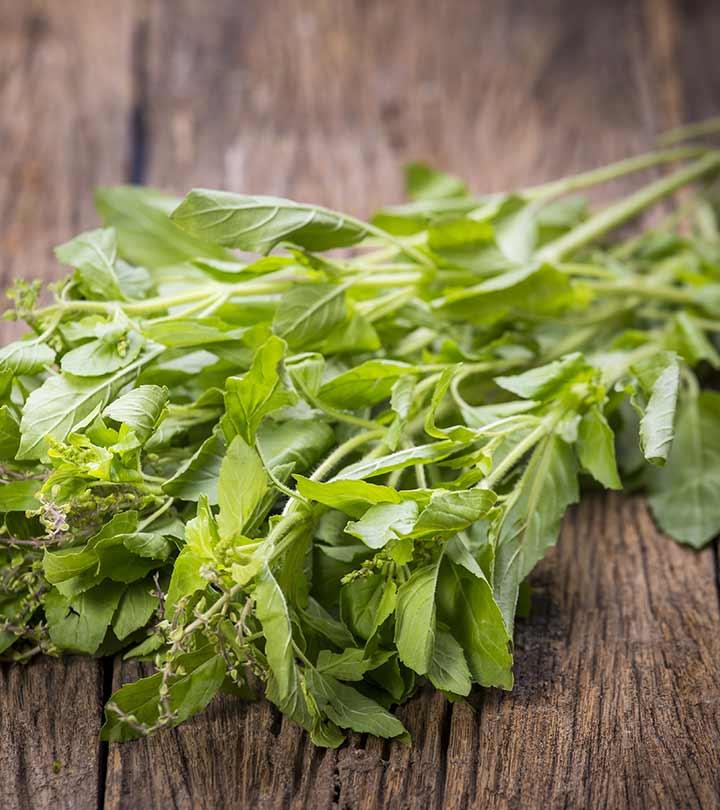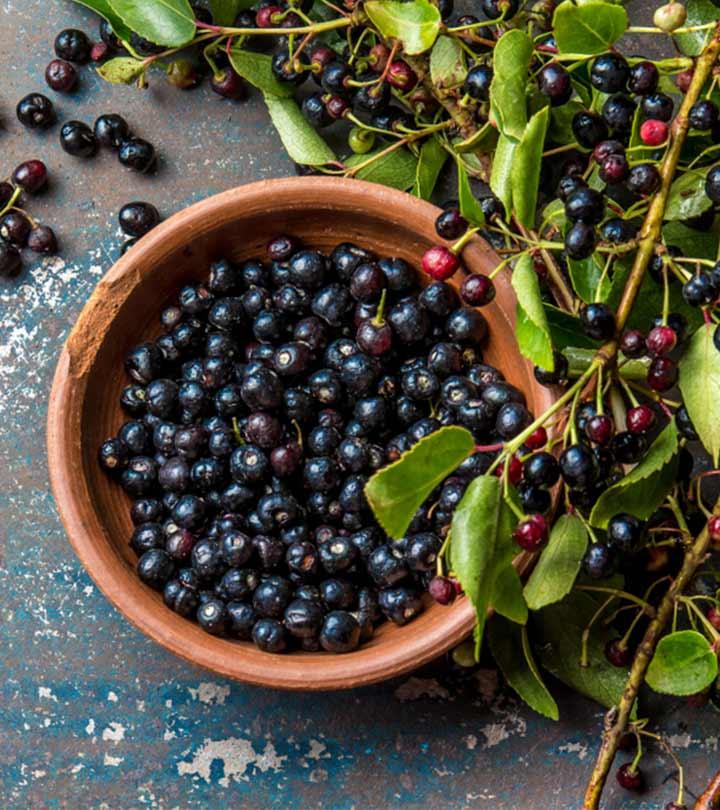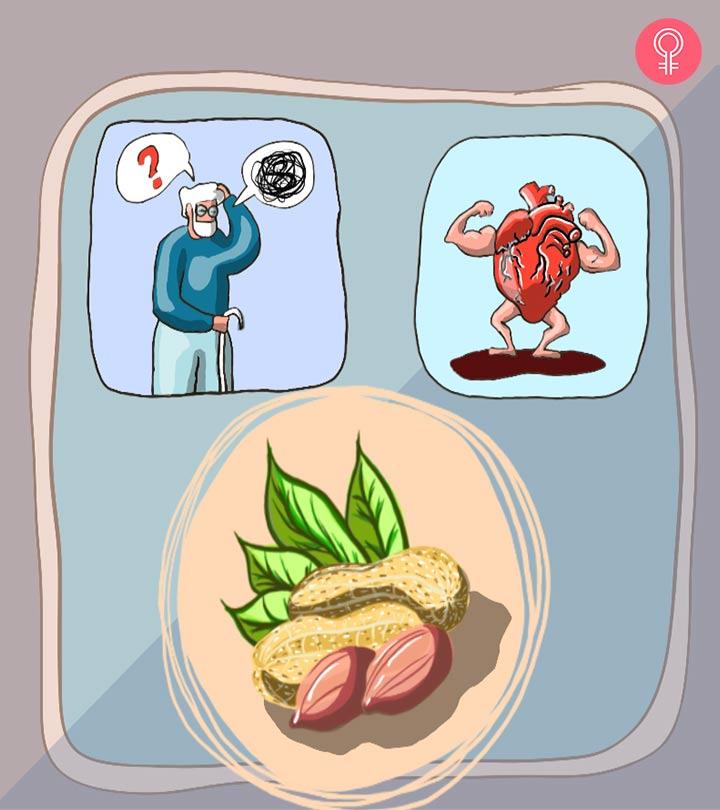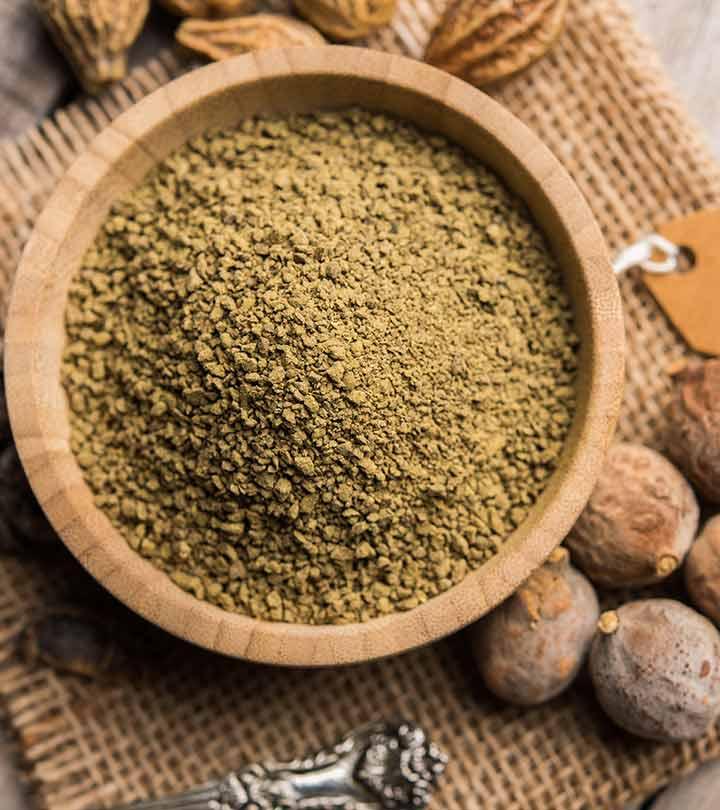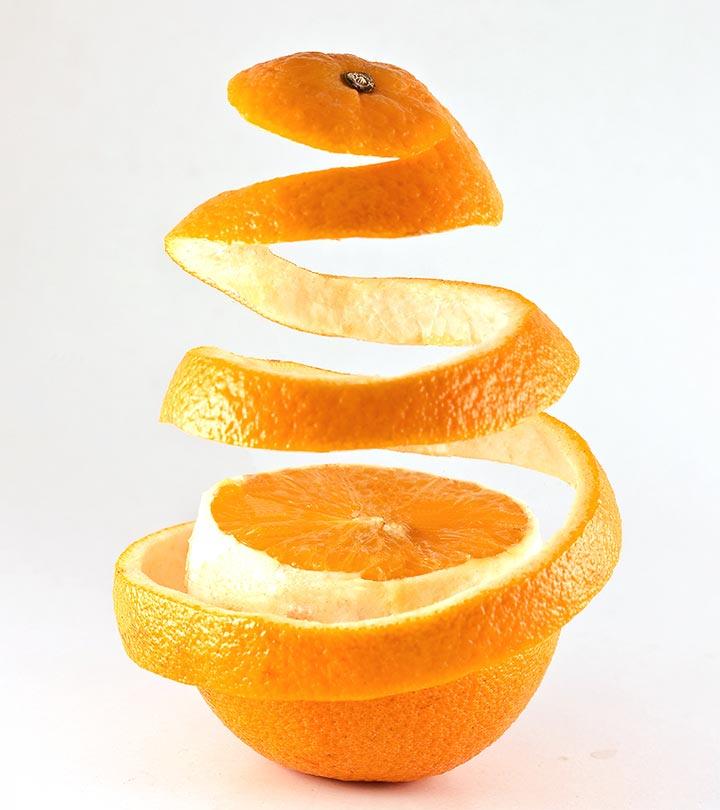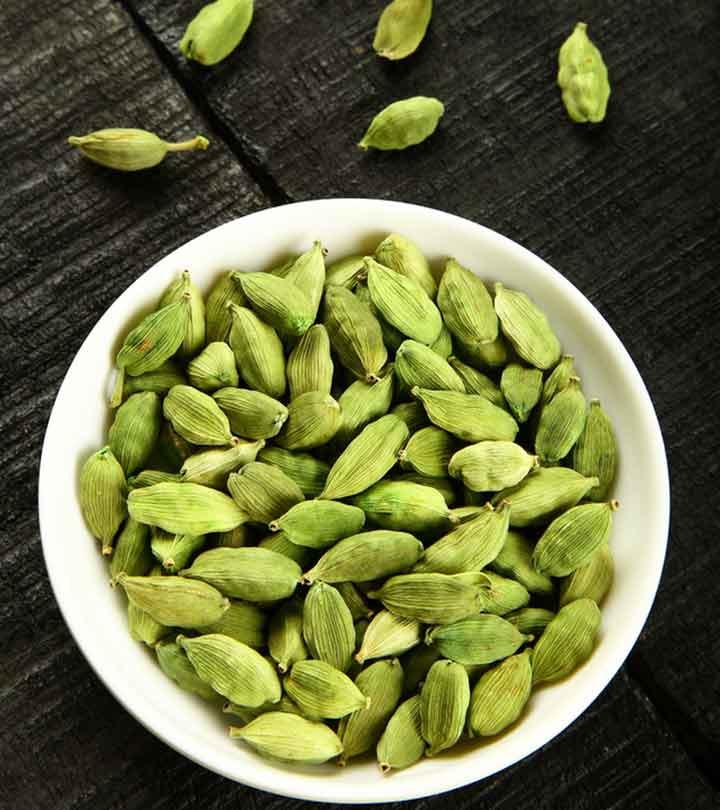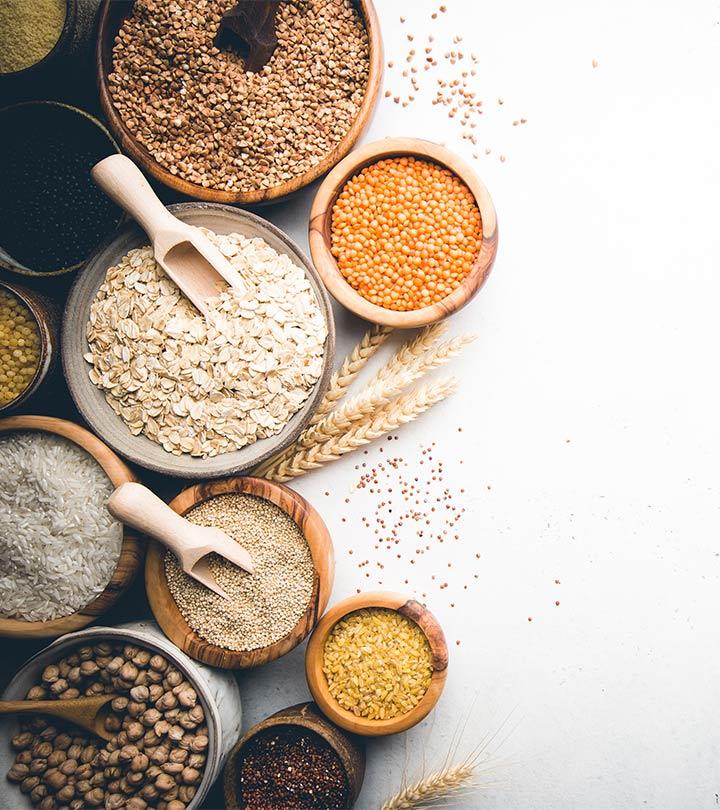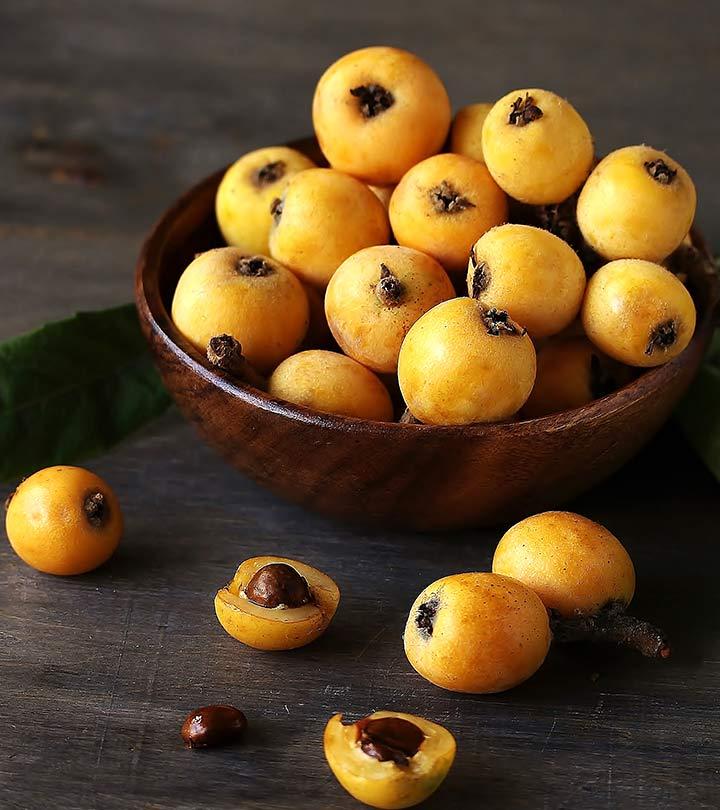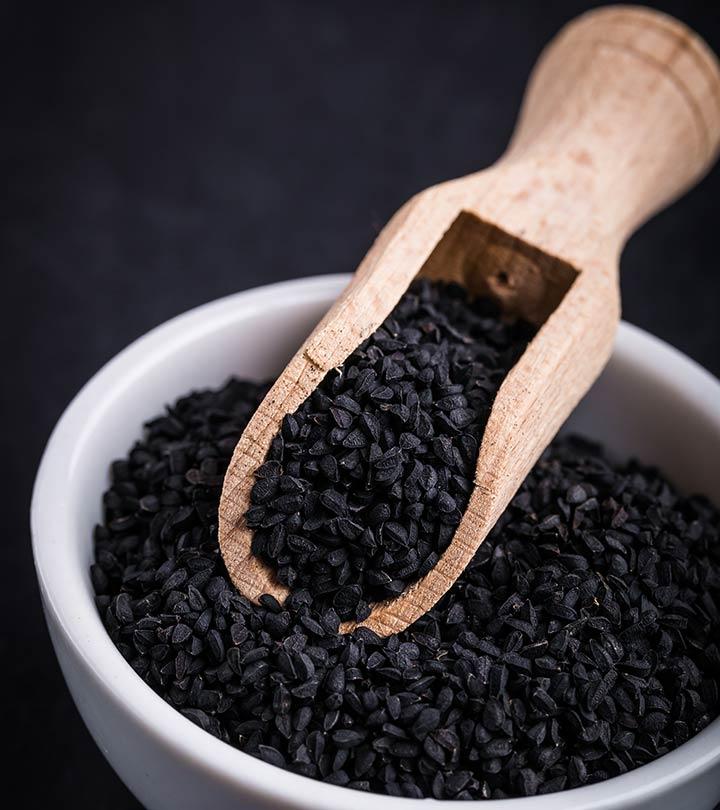Almond Butter Vs. Peanut Butter: Which One Is Healthier?
It's not just the taste or texture, but also the nutrient profiles that separate the two.

Image: Shutterstock
Nut butters are a tasty and healthy addition to your diet. With increasing health consciousness, many are looking for healthier options for every meal. This has paved the way to the almond butter Vs. peanut butter debate. Both these butters are nutrient-dense and delicious. However, if you wonder which might be the best fit for your diet, this article can answer your query. Continue reading to know more.
In This Article
Almond Butter Vs. Peanut Butter: Nutritional Comparison
Almond and peanut butter are rich in essential nutrients, fats, and other nutrients. However, one of them is healthier than the other on a nutritional basis. A tablespoon (16 g) of almond and peanut butter contain (1), (2) :
| Almond Butter Vs. Peanut Butter: Nutrition Facts | ||
|---|---|---|
| Nutrition | Almond Butter | Peanut Butter |
| Energy | 98.2 kcal | 95.5 kcal |
| Protein | 3.36 g | 3.6 g |
| Total lipid (fat) | 8.88 g | 8.18 g |
| Carbohydrate | 3.01 g | 3.57 g |
| Fiber, total dietary | 1.65 g | 0.768 g |
| Sugars | 0.709 g | 1.68 g |
| Calcium | 55.5 mg | 7.84 mg |
| Magnesium | 44.6 mg | 27 mg |
| Phosphorus | 81.3 mg | 54.2 mg |
| Potassium | 120 mg | 90.2 mg |
| Vitamin E | 3.87 mg | 1.46 mg |
| Niacin | 0.506 mg | 2.13 mg |
| Monounsaturated fatty acids | 5.18 g | 4.06 g |
| Polyunsaturated fatty acids | 2.18 g | 1.97 g |
| Folate | 8.48 µg | 13.8 µg |
From a nutrition perspective, both appear almost similar. However, almond butter remains ahead on certain important aspects. If you still can’t decide on which one to choose, scroll down to the next section.
Peanut Butter Vs. Almond Butter: Which One Is Better?
In terms of calories, both are almost the same. However, almond butter has more vitamins, minerals, and fiber than peanut butter.
Almond butter has more calcium, potassium, magnesium, phosphorus, and vitamin E for roughly the same number of calories. Moreover, it also has 25% more healthy monounsaturated fats than peanut butter. Almond butter has more fiber than peanut butter. Fiber increases satiety, which may help in weight management.
On the other hand, peanut butter has slightly more protein than almond butter. It is affordable and is preferred for regular or bulk use. However, peanuts belong to the legume family and grow under the earth. This makes them susceptible to aflatoxin contamination, a toxic mold that is carcinogenic to humans. So, ensure the peanut butter that you buy is free from this compound.
Also, if you are looking for more nutrients for calories consumed, almond butter wins the battle.
Irrespective of your choice, both almond and peanut butter have several benefits. Let’s check them out in the next section.
Health Benefits Of Almond Butter And Peanut Butter
1. Promote Weight loss
Foods that promote satiety may help in weight management. Both peanut and almond butter are rich in protein, and fiber, making you feel full faster. Moreover, studies found that adding nuts to your diet could reduce the risk of obesity (3), (4).
2. Boost Heart Health
Nuts and peanuts are rich in cardioprotective nutrients that keep your heart healthy. Nutrients like monounsaturated and polyunsaturated fatty acids, vitamin E, niacin, and magnesium in peanuts and almonds reduce the risk of heart diseases. Peanut butter also improves lipid profile and helps in weight control in people with diabetes (5), (6).
3. Manage Blood Glucose Levels
Unsweetened peanut or almond butter has a low impact on blood glucose levels. A study showed that women who consumed nuts had lower blood sugar levels and more satiety than women who had the same carbs but no nuts (7). Type 2 diabetes is often linked to magnesium deficiency (8). Both almond and peanut butter are good sources of magnesium and, thus, improve insulin resistance. However, further research is required to verify this claim.
 Trivia
TriviaStore-bought peanut butter and almond butter may contain additives, sugar, preservatives, and salt, and may not be that great for your health. However, you can easily prepare both at home. Here is how.
How To Make Almond Butter And Peanut Butter
Almond Butter Recipe
Ingredients
- 4 cups of almonds, unsoaked
- 2 tablespoons of neutral oil like avocado or vegetable oil (optional)
Instructions
- Preheat the oven to 350℉.
- Line a baking tray with parchment paper and spread the almonds.
- Dry roast the almonds for 10-13 minutes. Let them cool down.
- Blitz the almonds with oil in a food processor to your desired consistency.
- Blend to your desired consistency.
Extra Tips
- You may add a pinch of sea salt, cinnamon powder, a bit of honey (as per your taste) to add flavor to the almond butter.
Now savor this alternative dish, altogether distinct from your typical snack options!
Peanut Butter Recipe
Ingredients
- 2 cups of peanuts, regular or dry roasted
- 1 tablespoon of honey (optional)
- 1 teaspoon of sea salt (optional)
Instructions
- Dry roast the peanuts in the oven at 375 (unless you are using roasted peanuts).
- Let them cool down and blitz them with the other ingredients for 5-10 minutes to your desired consistency.
 Trivia
TriviaBrooke McMillan, a cook and a blogger, prefers almond to peanut butter and shares the following to urge others on: “If you’ve never tried almond butter before, then I urge you to give it a try! I used to be a faithful peanut butter lover until I first tried it, and now I’m addicted to almond butter (i).”
This is easy, right? Now, you can always enjoy the butter on a piece of toast, but we got some interesting recipes you can make with them! Scroll down.
Recipes To Try With Almond Butter And Peanut Butter
1. Dairy-Free Almond Butter Icecream
Ingredients
- 1½ cups of unsweetened almond milk (or any non-dairy milk)
- 1 cup of pitted dates
- 1 cup of almond butter
- 1 teaspoon of salt
- 2 teaspoons of almond extract (optional)
- 1 teaspoon of vanilla extract or ¼ teaspoon of ground vanilla bean
- ½ cup of dried cherries/cocoa nibs/almonds for garnish
Instructions
- Blitz all ingredients in a food processor until smooth and creamy.
- Transfer the contents to a freezer-safe container.
- Garnish it and let it set in the freezer for 5 to 6 hours.
- Remove from the freezer and let it thaw a bit before serving.
2. Peanut Butter Pork Toast
Ingredients
- 1 tablespoon of peanut butter
- 1 slice of crusty bread
- 2 tablespoons of cooked and shredded pork
- 1 teaspoon of chili sauce, preferably sriracha
- 1 jalapeno pepper, thinly sliced
- A pinch of curry powder (optional)
Instructions
- Slightly toast the bread and spread the peanut butter on it.
- Layer with pork and drizzle some chili sauce.
- Sprinkle the curry powder (if using).
- Top it off with the jalapeno slices and enjoy!
If you are a little more hungry you can turn it into a sandwich– all you need is another slice of bread. These are some interesting and savory ways to have regular peanut and almond butter. However, check for possible allergies before you consume peanut and almond butter.
 Quick Tip
Quick TipPossible Side Effects Of Almond And Peanut Butters
If you have a nut allergy, avoid peanuts and almonds. Peanuts are responsible for the majority of severe food-related allergic reactions compared to almonds. Though it is rare, those who are allergic to peanuts may also be allergic to almonds. It may cause the following symptoms (9),(10), (11):
- Rashes
- Swelling
- Tightness in throat
- Cough
- Wheezing
- Nasal congestion
- Vomiting
- Diarrhea
- Stomach pain
- Low blood pressure
- Irregular heartbeat
- Cardiac arrest
These potential side effects might prompt you to explore alternative options to nut butters. Let’s look at some substitutes for peanut butter below.
Alternatives For Peanut Butter
You can use several nutritious and delicious options in place of peanut butter. These include:
- Cashew Butter: It is derived from roasted cashews and boasts a rich, velvety consistency and a subtle nutty taste.
- Sunflower Seed Butter: It is made from roasted sunflower seeds and has a mild, buttery flavor. It may be suitable for those with nut allergies.
- Tahini: It is made from ground hulled sesame seeds and provides a nutty, earthy flavor. It is a staple in Mediterranean cuisine.
Each of these substitutes offers a distinct taste and nutritional profile. So, you can choose what suits your dietary preferences the best.
The Verdict
The almond butter vs. peanut butter debate has been around for a long time. Almond butter seems to be relatively healthier than peanut butter in terms of the nutritional breakdown. While both these butter options have a similar calorie count, almond butter is richer in vitamins, minerals, and fiber. Consuming either in moderation may promote weight loss, boost heart health, and manage blood glucose levels. However, people allergic to nuts may experience rashes, cough, vomiting, diarrhea, and stomach pain. Hence, avoid these butter options if you have a nut allergy. Also, remember to check your portions.
Frequently Asked Questions
Which nut butter is healthiest?
Almond and walnut butters are the healthiest nut butters. They are rich in healthy fats and omega-3 fatty acids that positively affect overall health.
Can I substitute peanut butter for almond butter?
Yes, peanut butter can be an ideal substitute for almond butter. Both have a similar nutritional profile.
Can almond butter and peanut butter be used interchangeably in recipes?
Apart from recipes that require specific peanut butter or almond butter, these two can be used interchangeably in baking and cooking.
Are there any variations of almond butter or peanut butter, such as crunchy or flavored options?
Yes, there are many options available for both peanut and almond butter in terms of texture and flavor. You can pick crunchy, smooth, salted, unsalted, or raw butter. There are flavored peanut butter and almond butter options available flavored with cinnamon, chocolate, or honey.
How should almond butter and peanut butter be stored to maintain freshness?
To store your almond or peanut butter, use an air-tight container, refrigerate it after opening the container, store it in a cool dry place, and stir well before every use.
Can almond butter or peanut butter help with muscle recovery after workouts?
Both almond and peanut butter contain healthy fats, protein, and other nutrients, making it a good post-workout choice. However, a balanced diet is required to aid muscle recovery; just the butter won’t suffice.
Key Takeaways
- Both almond butter and peanut butter have an almost similar nutritional profile. But almond butter has slightly more fiber and vitamins and mineral content.
- Intake of these nut butter may help in weight management and heart health.
- You can prepare almond and peanut butter easily at home with a few ingredients.
- However, people with nut allergies should avoid consuming them.
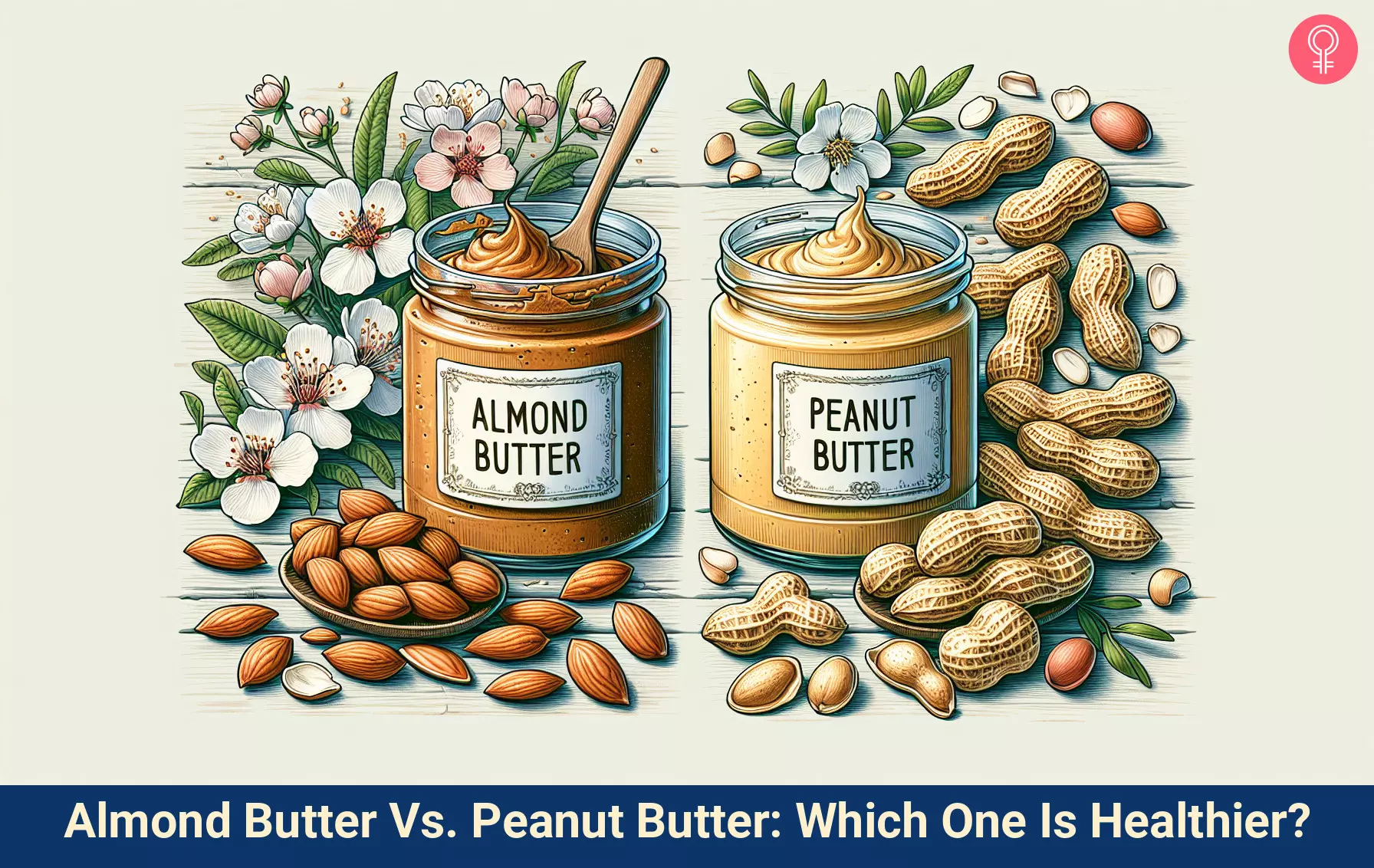
Image: Dall·E/StyleCraze Design Team
Curious about the differences between peanut butter and almond butter? Watch this video to find out which one is healthier and tastier. Delve into the ultimate nut-butter debate now.
Personal Experience: Source
StyleCraze's articles are interwoven with authentic personal narratives that provide depth and resonance to our content. Below are the sources of the personal accounts referenced in this article.
i. Honey Cinnamon Almond Butterhttps://brooke-bakes.blogspot.com/2012/07/honey-cinnamon-almond-butter.html
References
Articles on StyleCraze are backed by verified information from peer-reviewed and academic research papers, reputed organizations, research institutions, and medical associations to ensure accuracy and relevance. Read our editorial policy to learn more.
- ‘ Nuts’ ‘Almond Butter’ ‘Plain’ Without Salt Added
https://fdc.nal.usda.gov/fdc-app.html#/food-details/168588/nutrients - Peanut Butter
https://fdc.nal.usda.gov/fdc-app.html#/food-details/1100559/nutrients - Optimising Foods for Satiety
https://www.sciencedirect.com/science/article/pii/S0924224414002386?via%3Dihub - Nut Intake and 5-Year Changes in Body Weight and Obesity Risk in Adults: Results from the Epic-panacea Study
https://pubmed.ncbi.nlm.nih.gov/28733927/ - The Role of Tree Nuts and Peanuts in the Prevention of Coronary Heart Disease: Multiple Potential Mechanisms
https://www.researchgate.net/publication/23183389_The_Role_of_Tree_Nuts_and_Peanuts_in_the_Prevention_of_Coronary_Heart_Disease_Multiple_Potential_Mechanisms - A Randomized Controlled Trial to Evaluate the Effect of Incorporating Peanuts into an American Diabetes Association Meal Plan on the Nutrient Profile of the Total Diet and Cardiometabolic Parameters of Adults with Type 2 Diabetes
https://www.ncbi.nlm.nih.gov/labs/pmc/articles/PMC3902416/ - Acute and Second-Meal Effects of Peanuts on Glycaemic Response and Appetite in Obese Women with High Type 2 Diabetes Risk: A Randomised Cross-Over Clinical Trial
https://pubmed.ncbi.nlm.nih.gov/23122211/ - Magnesium and Type 2 Diabetes
https://www.ncbi.nlm.nih.gov/labs/pmc/articles/PMC4549665/ - Peanut Allergy: An Overview
https://www.ncbi.nlm.nih.gov/labs/pmc/articles/PMC154188/ - Clinical study of peanut and nut allergy in 62 consecutive patients: new features and associations
https://pubmed.ncbi.nlm.nih.gov/8616415/ - Almond Allergy: ‘An Overview on Prevalence’ ‘Thresholds’ Regulations and Allergen Detection
https://www.ncbi.nlm.nih.gov/labs/pmc/articles/PMC6266711/
Read full bio of Dr. Archna Agrawal
Read full bio of Ravi Teja Tadimalla
Read full bio of Payal Karnik








